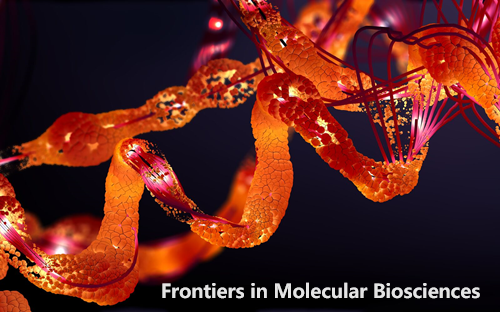将 ATRNL1 和 WNT9A 鉴定为肥厚型心肌病的新型关键基因和候选药物:综合生物信息学和实验验证
IF 3.9
3区 生物学
Q2 BIOCHEMISTRY & MOLECULAR BIOLOGY
引用次数: 0
摘要
背景肥厚性心肌病(HCM)是一种以左心室肥大为特征的遗传性疾病,可导致心力衰竭、心律失常和心脏性猝死。尽管进行了广泛的研究,但人们对肥厚性心肌病的分子机制仍不完全了解,有效的治疗方法仍然有限。通过利用生物信息学和实验验证,本研究旨在确定肥厚型心肌病(HCM)中涉及的关键基因和通路,发现新型候选药物,并为其发病机制和潜在治疗策略提供新见解。方法利用基因表达总库(GEO)数据集(包括三个 mRNA 图谱数据集和一个 miRNA 表达数据集)确定肥厚型心肌病(HCM)中常见的上调和下调基因。利用相互作用网络和一致的 miRNA-mRNA 匹配进行了富集分析和中心基因探索。筛选出治疗 HCM 的潜在药物。使用异丙肾上腺素建立了 HCM 细胞和动物模型。验证了关键的未研究差异表达基因(DEG)。用新型潜在药物治疗动物,并通过超声指标评估 HCM 的改善情况。血红素和伊红(H&E)染色用于评估心肌纤维化。结果我们发现了 145 个与 HCM 发展相关的关键上调 DEGs 和 149 个下调 DEGs,其中有 8 个核心上调基因和 7 个核心下调基因。上调的 miRNA 有 30 个,下调的 miRNA 有 6 个。在 6 个下调的 miRNA 和 1291 个匹配的 miRNA(针对 8 个核心上调 DEGs)之间,有一个共同的 miRNA,即 miR-1469。利用 CTD 数据库,影响核心 DEGs 表达/丰度/甲基化/代谢过程的药物(排除毒性药物后)包括对乙酰氨基酚、丙基硫脲嘧啶、甲嘧啶、曲普利特、维甲酸等。在 HCM 细胞模型中,只有 ATRNL1 和 WNT9A 显著增加。在 HCM 动物模型中,丙基硫氧嘧啶、miR-1469 和曲普内酯对 HCM 有不同程度的治疗效果。丙基硫氧嘧啶能显著抑制 HCM 模型中 ATRNL1 的表达,而 miR-1469 和曲普内酯则不能,这三种药物都能抑制 WNT9A 的表达。hsa-miR-1469的缺乏可能是HCM发病的一个机制。治疗 HCM 的新型药物包括丙基硫脲嘧啶和曲普特内酯。本文章由计算机程序翻译,如有差异,请以英文原文为准。
Identification of ATRNL1 and WNT9A as novel key genes and drug candidates in hypertrophic cardiomyopathy: integrative bioinformatics and experimental validation
BackgroundHypertrophic cardiomyopathy (HCM) is a genetic disorder characterized by left ventricular hypertrophy that can lead to heart failure, arrhythmias, and sudden cardiac death. Despite extensive research, the molecular mechanisms underlying HCM are not fully understood, and effective treatments remain limited. By leveraging bioinformatics and experimental validation, this study aims to identify key genes and pathways involved in HCM, uncover novel drug candidates, and provide new insights into its pathogenesis and potential therapeutic strategies.MethodsCommonly upregulated and downregulated genes in hypertrophic cardiomyopathy (HCM) were identified using Gene Expression Omnibus (GEO) datasets, including three mRNA profiling datasets and one miRNA expression dataset. Enrichment analysis and hub-gene exploration were performed using interaction networks and consistent miRNA-mRNA matches. Potential drugs for HCM were screened. HCM cellular and animal models were established using isoproterenol. Key unstudied differentially expressed genes (DEGs) were validated. Animals were treated with novel potential drugs, and improvements in HCM were assessed via ultrasound metrics. Hematoxylin and eosin (H&E) staining was used to assess myocardial fibrosis. Immunohistochemistry was employed to detect DEGs in cellular experiments.ResultWe discovered 145 key upregulated and 149 downregulated DEGs associated with HCM development, among which there are eight core upregulated and seven core downregulated genes. There are 30 upregulated and six downregulated miRNAs. Between the six downregulated miRNAs and 1291 matched miRNAs (against eight core upregulated DEGs), there is one common miRNA, miR-1469. Using the CTD database, drugs that impact the expression/abundance/methylation/metabolic process of core DEGs (after the exclusion of toxic drugs) included acetaminophen, propylthiouracil, methapyrilene, triptolide, tretinoin, etc. In the HCM cell model, only ATRNL1 and WNT9A were significantly increased. In the HCM animal model, propylthiouracil, miR-1469, and triptolide demonstrated varying degrees of therapeutic effects on HCM. Propylthiouracil, but not miR-1469 or triptolide, significantly inhibited the expression of ATRNL1 in the HCM model, and all three drugs suppressed WNT9A expression.ConclusionWe identified several novel genes in HCM development, among which ATRNL1 and WNT9A were validated by cell and animal models. A deficiency of hsa-miR-1469 may be a mechanism behind HCM development. Novel medications for HCM treatment include propylthiouracil and triptolide.
求助全文
通过发布文献求助,成功后即可免费获取论文全文。
去求助
来源期刊

Frontiers in Molecular Biosciences
Biochemistry, Genetics and Molecular Biology-Biochemistry
CiteScore
7.20
自引率
4.00%
发文量
1361
审稿时长
14 weeks
期刊介绍:
Much of contemporary investigation in the life sciences is devoted to the molecular-scale understanding of the relationships between genes and the environment — in particular, dynamic alterations in the levels, modifications, and interactions of cellular effectors, including proteins. Frontiers in Molecular Biosciences offers an international publication platform for basic as well as applied research; we encourage contributions spanning both established and emerging areas of biology. To this end, the journal draws from empirical disciplines such as structural biology, enzymology, biochemistry, and biophysics, capitalizing as well on the technological advancements that have enabled metabolomics and proteomics measurements in massively parallel throughput, and the development of robust and innovative computational biology strategies. We also recognize influences from medicine and technology, welcoming studies in molecular genetics, molecular diagnostics and therapeutics, and nanotechnology.
Our ultimate objective is the comprehensive illustration of the molecular mechanisms regulating proteins, nucleic acids, carbohydrates, lipids, and small metabolites in organisms across all branches of life.
In addition to interesting new findings, techniques, and applications, Frontiers in Molecular Biosciences will consider new testable hypotheses to inspire different perspectives and stimulate scientific dialogue. The integration of in silico, in vitro, and in vivo approaches will benefit endeavors across all domains of the life sciences.
 求助内容:
求助内容: 应助结果提醒方式:
应助结果提醒方式:


